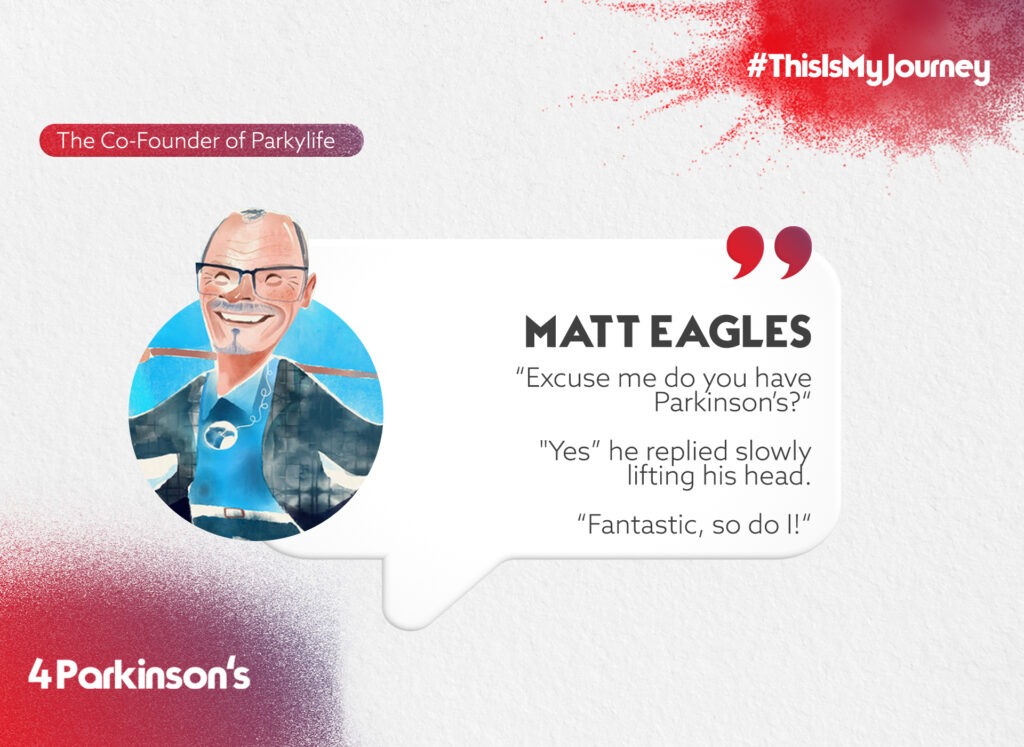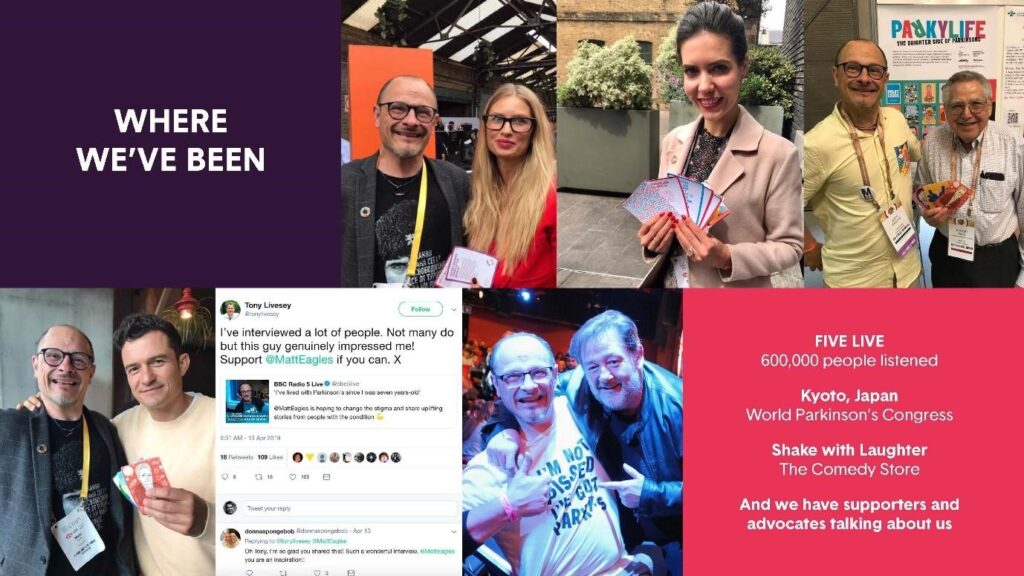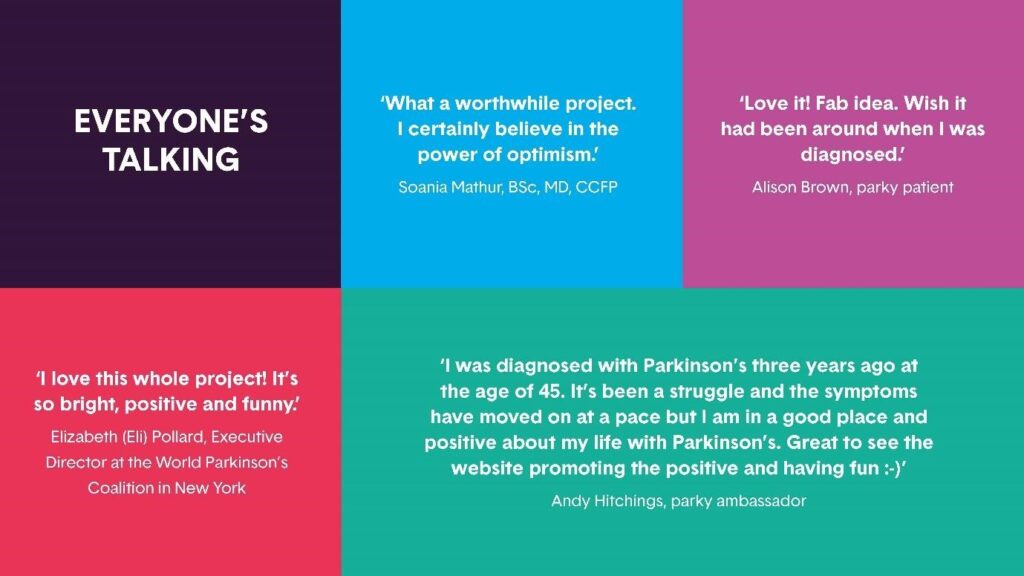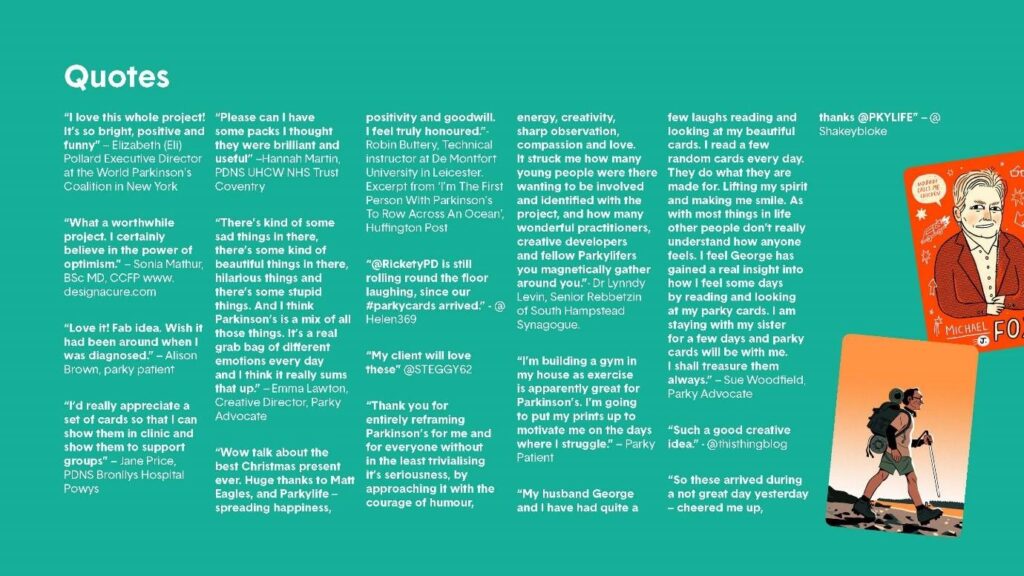
As the founder of ParkyLife, your constant smile and boundless positivity continue to inspire many. What motivated you to start ParkyLife, and how has it positively affected the Parkinson's community?
It’s a known fact that Parkinson’s has a lousy press in many places worldwide. The general public sees it as a disease of a bygone era of a frail older man struggling to walk. This is partly due to Sir William Gowers's etching from the 1880s in his book Manuel of Diseases of the Nervous System. There is no doubt that the stance portrayed is classic Parkinson’s; however, whilst the world has evolved, particularly with the revolutionary global connectivity provided by the internet, this image has endured since Gowers’ day as a striking portrayal of Parkinson's disease and reused and adapted in academic publications, lectures, and seminars. I understand the educational value and desire of clinicians and lecturers to preserve the history of medicine. Still, Pierre B, on whom the image is based, does not represent the modern-day Person With Parkinson’s. It’s a bit like explaining football to new students and putting a picture of a footballer from the 1900s. It doesn’t show how the game has moved on or how imagery has become so powerful and influential in people’s lives with the development of social media platforms such as Instagram.

Parkylife began with me sharing anecdotes of my everyday mishaps living with Parkinson’s, difficulty dressing, preparing food, making a drink etc., with my colleagues at work, which made them laugh. One of the creative team illustrated my story about getting dressed and falling over, and putting my pants on. It sparked an idea to help people come to terms with awkward, embarrassing, and altogether frustrating situations that occur daily to people living with Parkinson’s – Parkylife was born. As a team, we decided to collect hacks, tips, and funny stories from everyone we knew within the Parky community without excluding anyone, people living with Parkinson’s, their PAs, family members, friends, neurologists, specialist nurses, physios, speech therapists to see if we could gather little nuggets of positivity to help those coping with their diagnosis. We were going to change the general public’s perceptions of how you can live with a chronic degenerative neurological condition using positivity, creativity, humour, and joy despite the challenges and heartache that it causes every day.

To cement this objective, a chance meeting at Euston railway station in London proved that there was a huge unmet need for Parkylife.
I was sitting in the assistance lounge, quite dyskinetic, so wriggling around, I noticed a couple sitting opposite me. He was looking sad and was staring down at the floor. He had a noticeable tremor. She was looking equally downbeat. There was a seat free next to him, and I decided to stagger over. I sat down beside him, and tentatively I asked.
“Excuse me, do you have Parkinson’s?”
“Yes “, he replied, slowly lifting his head.
“Fantastic, so do I! “
His demeanour changed, and we had a great conversation, with his wife taking part too. He had recently been diagnosed and hadn’t been sign-posted to anything positive.
All the way home, I couldn’t get rid of the image of the couple's sad and dejected faces, and I was determined that NOBODY should be left to feel hopeless and alone after receiving a Parkinson’s diagnosis. Parkylife was born!
Parkylife brings together all of the beautiful stories, hacks, and perks from Parky people and highlights the inspiring folk who have achieved great things despite their diagnoses. Ultimately, we want to reach everyone with Parkinson’s and help them overcome symptoms and feel less isolated and happier.

The idea's core is to boost Parky people if they feel low or isolated. We’re here to pick you up when Parky's getting you down. That’s why as well as creating an online platform, we created a tangible, tactile pack of positivity to make the whole idea even more accessible. It’s a permanent and physical reminder that you’re not alone and plenty of people are in the same boat as you. And we just loved the idea that if you are having an off day, you can instantly dive in and choose a card to give you a lift. It’s a bit like always having a support buddy at your side.
We have had tremendous feedback from the community from people in receipt of the cards and from events we have put on in Manchester and London and podcasts and events I have spoken at and attended.

My experience and that of every single member of the Parky Community influence the direction Parkylife will take. It has to. I am just one person with Parkinson’s, and whilst I can be super excited and optimistic, it's not just for my benefit. It's designed for the whole world to enjoy!

To make the most significant impact globally, we need to localise the content to make the content relate to the different cultures and faiths. To make it relevant and ownable. However, to do this, we need help from those communities who feel un-represented, like the Parkys in Turkey, India, and many parts of Northern and Sub-Saharan Africa.
Join our community in spreading hope and strength. Tell us your unique journey with Parkinson's to uplift and empower others.